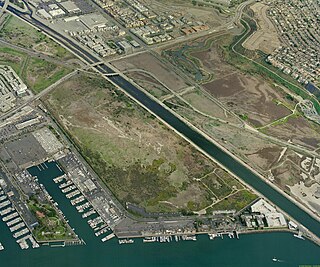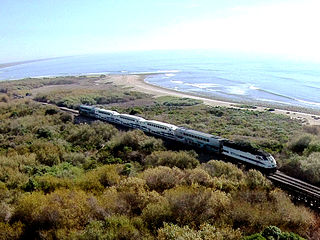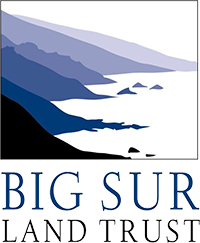Related Research Articles
Earthjustice is a nonprofit public interest organization based in the United States dedicated to litigating environmental issues. Headquartered in San Francisco, it has 14 regional offices across the United States, an international program, a communications team, and a policy & legislation team in Washington, DC.
David Helvarg is an American journalist and environmental activist. He is the founder and president of the marine conservation lobbying organization Blue Frontier Campaign, a part of the Seaweed rebellion, which arose from his second book Blue Frontier. His first book, The War against the Greens, puts a case that violent organized resistance is being orchestrated against the environmental movement.

Sierra Club Canada (SCC) is a Canadian environmental organization. It is part of the environmental movement.

The San Diego River is a river in San Diego County, California. It originates in the Cuyamaca Mountains northwest of the town of Julian, then flows to the southwest until it reaches the El Capitan Reservoir, the largest reservoir in the river's watershed at 112,800 acre-feet (139,100,000 m3). Below El Capitan Dam, the river runs west through Santee and San Diego. While passing through Tierrasanta it goes through Mission Trails Regional Park, one of the largest urban parks in America. The river discharges into the Pacific Ocean near the entrance to Mission Bay, forming an estuary.

Ballona Wetlands State Ecological Reserve is located in Los Angeles County, California, just south of Marina del Rey and east of Playa del Rey. The natural wetlands once included the areas now taken up by Marina del Rey, New Amsterdam Canals of Venice, Playa Vista, northern Playa del Rey, and formerly extended northerly beyond Venice Boulevard to the historical Venice Canals that are now covered in asphalt with 6 streets.

Trestles is a collection of surfing spots between northern San Onofre State Beach in San Diego County and southern San Clemente in Orange County in California. Trestles consists of, from north to south, Upper Trestles (Uppers), Lower Trestles (Lowers), and Middle Trestles (Middles). North of Upper Trestles is the surf spot called Cottons. South of Middles is the surf spot called The Church. It is named after Trestles Bridge, a wooden trestle bridge that surfers must walk under to reach the beach, replaced in 2012 by a concrete viaduct.
Pilarcitos Creek is a 13.5-mile-long (21.7 km) coastal stream in San Mateo County, California, United States, that rises on the western slopes of the Santa Cruz Mountains and descends through Pilarcitos Canyon to discharge into the Pacific Ocean Half Moon Bay State Beach.
Greenbelt Alliance is a non-profit land conservation and urban planning organization that has worked in California's nine-county San Francisco Bay Area since 1958.
Mark Massara is an American surfer, attorney, and environmental conservationist. He first gained a reputation in the surfing and environmental communities when he won a $5.6 million Clean Water Act violation, the second largest ever collected. Since that case, he has assisted nonprofit organizations, including Surfrider Foundation and Sierra Club, government agencies, and private sector enterprises in several high-profile coastal and ocean protection, restoration, education and development campaigns that highlight and achieve coastal conservation and amenities for wildlife and future generations.
Citizens for East Shore Parks (CESP) is an United States environmental organization that focuses on the acquisition and preservation of parkland in the San Francisco Bay Area. CESP works to protect open space along the East Bay shoreline for natural habitat and recreational purposes through a combination of advocacy, education, and outreach. Since its founding in 1985, CESP has worked to secure approximately 1,800 acres (730 ha) of public land, primarily through the creation of the 8.5-mile (13.7 km) long Eastshore State Park in 2002.

Los Peñasquitos Marsh Natural Preserve and Lagoon is a coastal marsh in San Diego County, California, United States situated at the northern edge of the City of San Diego, forming the natural border with Del Mar, California. The lagoon, previously called The Soledad Lagoon, divides a colony of the endangered Pinus torreyana on a narrow coastal strip. The name "Los Peñasquitos" is Spanish for "The Little Cliffs".
Conserving Carolina is a non-profit conservation organization working to preserve water and land resources in Western North Carolina. Conserving Carolina was created in July 2017, from a merger of two previously-separate organizations, Carolina Mountain Land Conservancy and Pacolet Area Conservancy. The combined organization maintains a primary office in Hendersonville, NC and a regional office in Columbus, NC.
The Council for Watershed Health (CWH) is a nonprofit environmental organization in the U.S. state of California. It was founded in 1996 by Dorothy Green to preserve, restore, and enhance the Los Angeles and San Gabriel River watersheds. To accomplish this, it has brought together representatives from the regional water agencies, as well as government regulatory agencies ; community and environmental citizen groups; and businesses in the Los Angeles Basin watershed.

The Land Conservancy of San Luis Obispo County (LCSLO) is a local nonprofit organization that has served San Luis Obispo (SLO) County since 1984. Through voluntary and collaborative efforts the LCSLO works to protect and enhance lands having important scenic, agricultural, habitat and cultural values for the benefit of people and wildlife.

Martis Valley is a geographic area of 70 square miles (180 km2) in the United States, extending northward from the North Shore of Lake Tahoe, California, to the west of the California-Nevada border. It is located in Placer and Nevada Counties and is bisected by Martis Creek which flows north to the Truckee River.

The Big Sur Land Trust is a private 501(c)(3) non-profit located in Monterey, California, that has played an instrumental role in preserving land in California's Big Sur and Central Coast regions. The trust was the first to conceive of and use the "conservation buyer" method in 1989 by partnering with government and developers to offer tax benefits as an inducement to sell land at below-market rates. As of 2016, it has protected around 40,000 acres (16,187 ha) through acquisition and resale to government agencies. It has added conservation easements to another 17,000 acres (6,880 ha) and has retained ownership of a number of parcels totaling about 4,500 acres (1,821 ha).

Open spaces in urban environments, such as parks, playgrounds, and natural areas, can provide many health, cultural, recreational, and economic benefits to the communities nearby. However, access to open spaces can be unequal for people of different incomes. In California's two largest metropolitan regions, Los Angeles County in Southern California and the Bay Area in Northern California, access to green space and natural areas varies with the predominate races and classes of the communities. This also holds true in San Diego County in Southern California. Both expanding urbanization and diminishing funding for open space tend to widen these gaps in accessibility. Because open space is associated with various mental and physical benefits, a lack of access to it can pose health consequences. However, more research is needed to determine whether such environmental inequalities translate into long-term health inequalities, and, if so, how.
References
- 1 2 3 4 "Archived copy". Archived from the original on 2008-04-10. Retrieved 2008-03-28.CS1 maint: archived copy as title (link)
- 1 2 California Watershed Network
- ↑ "Archived copy". Archived from the original on 2007-10-24. Retrieved 2008-04-02.CS1 maint: archived copy as title (link)